Author(s): Ankur Saini
In the current work culture, hourly workers experience issues that hinder work satisfaction and efficiency, for instance, scheduling concerns, paperwork, and regulation of working conditions. This paper aims to explore how the use of intelligent automation through artificial intelligence (AI) shall revolutionize workforce management and, specifically, the ways through which decisions on workforce management shall be made, how mundane tasks shall be conducted more efficiently, and how the overall hourly work the workforce will look like. In processes such as on-demand scheduling,–signature, sign-off of the timesheets, or absence management, AI helps employees and managers become more productive by becoming what can be referred to as an ‘employee-friendly’ tool. Also, AI automatic and advanced predictive analytics are highlighted as an approach to offline workforce planning and getting near real-time projection of the available workforce against the required workforce. The application of AI in workforce management has, therefore, been seen to improve the performance of employees and the organization.
In the modern business environment, hourly employees are critical as they constitute the workforce in various sectors ranging from retail to hospitality and manufacturing. Nonetheless, these employees face various issues that adversely affect their satisfaction and performance at the workplace. Puzzling factors such as irregularity of schedules, lack of decision-making discretion, and performance of routine bureaucratic paperwork are demoralizing and contribute to high rates of staff turnover and low productivity.
The introduction of digital transformation has brought new ideas in response to these challenges. Of these, Intelligent Automation is arising as a key enabler enabled by Artificial Intelligence (AI). Thanks to the possibility of using superior algorithms and machine learning, AI can transform workforce management in a way that is superior, smarter, and less burdensome on the employees.

Figure 1: Impact of Working Environment on Job Satisfaction
Another of the significant benefits of applying AI in the management of the workforce is the improvement of the decision- making system. Conventional approaches are usually based on fixed information and efforts by supervisors, which can be faster and more accurate. There are, however, multiple benefits as AI systems can process extensive data in real time and provide the necessary insights to schedule the work dynamically, allocate resources efficiently, and predict potential issues.
Any monotonous job that can be handled by AI to reduce the time taken to complete it is not only a good way of cutting costs but also a way of giving our employees a chance to be creative. Since most of these are administrative tasks that can consume most of their working hours, the hourly workers will be free to engage in other more challenging and meaningful tasks. Such a change only leads to happier and more satisfying employment situations and enhances trust and self-organization.
This paper discusses the various dimensions where AI intelligent automation in workforce management has a positive impact. As the discussion explores the effects on the level of employee empowerment, decision-making, and task automation, it seeks to shed light on how such integration of technology means on organizational goals of different sectors and industries could potentially open up a new horizon for efficiency, productivity, and workplace satisfaction.
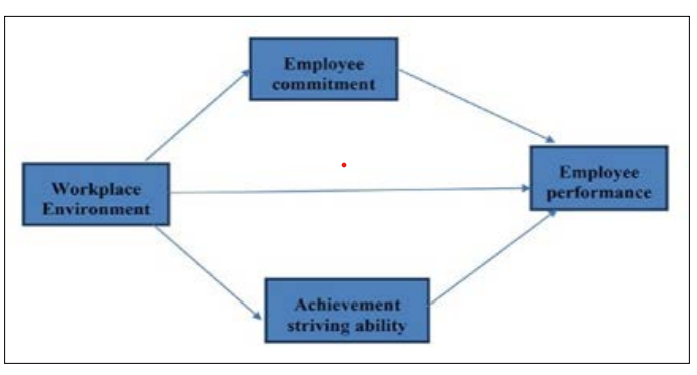
Figure 2: Impact of Employees' Workplace Environment on Employees' Performance
Modern shift planning has taken a new perspective and better approach with the approximation of artificial intelligence to the employment or scheduling of workforces [1]. Unlike the conventional approaches, which use human inputs and data that are set and hardly change, algorithms of the AI systems diagnose several factors. These include previous spectra of attendance in a particular place, preferences of employees, and business forecasts for the market. AI, through this data, can generate schedules that effectively address the operational requirements while also taking care of the unique personnel situation, thus providing a more fair work schedule.
Another benefit that can be obtained with the help of AI-powered scheduling is flexibility, which allows one to take into account some specific conditions. For example, economic situations such as light, heavy, or erratic rainy seasons, festivals, celebrations, and other events before or during certain seasons affect the demand of the business. AI systems can anticipate such changes and make necessary readjustments regarding staff schedules so that there is always the right number of workers in the workforce. This level of predictability is especially useful, as demand is normally unpredictable in the trade and tourism sectors. For instance, inadequate staff during a certain shift may result in unnecessary costs and losses since customer satisfaction is a major factor in these sectors.
With artificial intelligence, organizations can develop a staffing plan that is not rigid about shifts and can change when needed. It can also react dynamically, as when an employee is sick or if there is a shift in the demand for products, the system can readjust or recommend other solutions. As much as it enhances effectiveness by least disrupting performance, such agility relieves managers of handling problems that require their attention. Consequently, the business retains operational viability as employees get more structure and balance in their working lives.
One must emphasize the aspect of personalization in the context of AI-based scheduling [2]. Thanks to integrating employees' preferences, such as the choice of a shift or a day off, AI systems can offer working schedules that will suit the employees even more. This also enhances work satisfaction since employees are likely to work for organizations that meet their needs; hence, turnover will likely reduce. Also, requesting schedule changes or vice versa for the interchange of shifts makes it easier for employees to have control over the working conditions, hence improving their experience.
Last but not least, the adoption of scheduling through the use of Artificial Intelligence results in a reduction of expenditure in organizations. When it comes to staffing, most businesses can find ways of managing their employees so there is little or no need for overtime workers or temporary staff, which ordinarily would increase the labor cost. Also, with the ability to predict the need for staffing at a certain moment, the oversupply during the low season can be avoided, which will also be positive for the financial result. In conclusion, using AI to schedule your employees provides a detailed approach that improves the workforce schedule and the satisfaction, engagement, and productivity of employees in the firm.
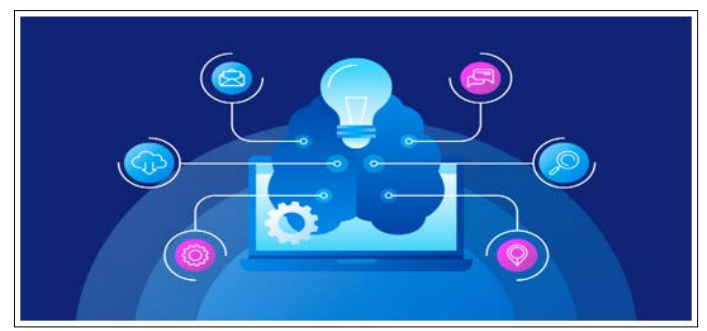
Figure 3: Key Concepts in AI Scheduling
Real-time decision support is one of AI's biggest value propositions in workforce management. AI solutions enable assessing business and people activities and immediate response to influential fluctuations [3]. This is especially useful when demand is unpredictable, for instance, in a retail outlet, a hospital, or a manufacturing plant. AI means managers can make decisions on the fly to ensure staffing levels and efficiency are met even when an unexpected spurt in activity occurs.
This capability is the most important of real-time decision support – to point out new trends before they become acute problems. For instance, if AI discovers a situation of high customer traffic, it can notify the managers about this and their need for more employees. This enhances preventive measures that can be made on the job, for instance, shifting tasks or hiring more workers to ensure that service delivery is not slowed down to levels that will demoralize the customers. In this way, AI can supply these timely alerts, preventing under- or over-staffing of the operation and its considerable implications for productivity and morale.
In fact, besides regulating variance in demand, real-time decision support can also improve the system's general productivity by providing a better solution to the problem of how particular tasks should be distributed. AI systems can track performance, workload, and other stats, such as task completion and completion rates, in real time and suggest likely changes needed to optimize the usage of resources [4]. For example, if there are some employees with a high workload and at the same time others have a low workload, AI can recommend how to reallocate work. This not only helps avoid the overworking of such people but also ensures that all tasks are well accomplished on time, thus making operations smooth and efficient.
It has been found that, based on artificial intelligence, real-time decision support is not only narrowly tied to current requirements but also includes strategic planning up to several years in the future [5]. When it comes to unforeseeable circumstances in the workforce and even to market trends within an organization, AI can predict the hurdles and openings for an organization to grab. This might entail changes in staffing strategies, readjustment of organizational processes, and introduction of training and development interventions to address potential competition skill gaps. Thus, adopting these ideas in decision-making prepares organizations for present and future challenges.
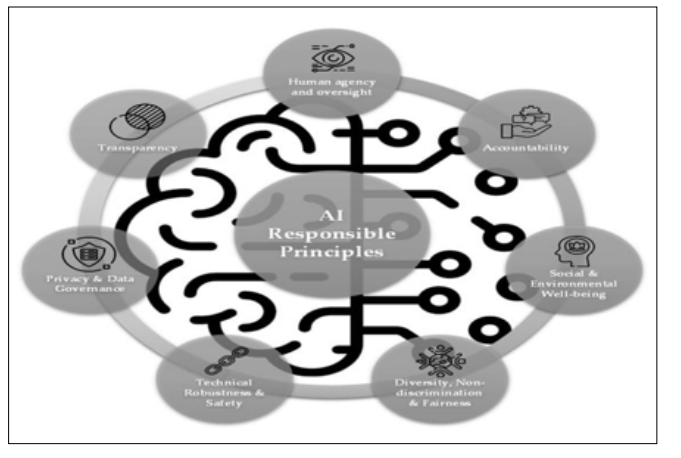
Figure 4: Investigating the Influence of Artificial Intelligence on Business Value in the Digital Era of Strategy Enhanced Employee Autonomy
Granting employees larger amounts of control over their experiences on the job is slowly but steadily becoming a valuable attribute for improving employee satisfaction and commitment, especially for hourly workers [6]. Using conventional approaches in assigning a workforce usually results in employee alienation, especially in decisions on scheduling, which makes them frustrated and helpless. This is not a comfortable position for most employees, and it is shifting with the help of AI-driven systems where employees are empowered and encouraged to be involved in the scheduling processes. Apart from boosting people's satisfaction at the workplace, emphasizing the delegation of more power to employees will also encourage the phenomenon of employees' identification with their jobs.
One of the ways through which AI supports employees' autonomy is through flexible schedules. With the help of AI-based systems, possible factors such as workers' availability, preference for working shifts, or other obligations can be taken into precise account to produce schedules, which would serve the company's crucial functions and any worker's preferences. Such systems enable workers to ask for new schedules, swap shifts with other workers, or show all their preferred hours. These options are considered through an artificial intelligence algorithm that can generate the required schedules. Since flexibility on this level empowers people to manage their working time more effectively, it increases satisfaction and thus decreases turnover rates.
The platforms based on artificial intelligence always offer options to make schedule changes based on employees' feedback. For instance, workers can apply with a mobile app to enjoy leave, change work schedules, and even indicate their preferred jobs [7].
These requests reach the AI system together with the schedule, which analyzes them and may correct the program schedule in kind. AI improves organizational culture in a workplace as it allows employees to have a say in how they want their working schedules to look, and they are valued members of the workforce.
The improvement of self-managed work is also not only good for the employment of the worker but for all the people in the team. Suppose the employees are made to feel that their preferences and needs are being considered when scheduling is being made. In that case, they are more likely to be motivated in the workplace. This increases support in the company, and employees are more willing to work together on the team and support their colleagues in reaching certain objectives. In addition, this control element makes it possible to make employees more proactive since having such control develops their capability to shape their working environment.
AI in workforce management also helps organizations capture employee feedback, which will be valuable for constantly improving scheduling [8]. When the census of the workers' responses is done along with the patterns of their preferences, the AI systems may point out the arrangements in the working schedule that could be enhanced to suit the workforce. By maintaining this feedback loop, the organizational needs related to the desirability of schedules provided to its employees are met. In turn, organizations are kept abreast of the new requirements and expectations of the force, thus contributing to a better, balanced, and efficient work system.
AI is increasingly becoming applicable to the automation of workforce management solutions because it mostly eradicates the influence of errors in administrative activities such as recording working hours, attendance, and payroll processing. Such tasks have been peripheral, but traditionally they have taken a lot of time and are often erroneous, leading to redundancies and disagreements. With the help of AI, these types of processes can be automated, which adds value by meaning that the performance of such processes will guarantee the reliable accomplishment of the goals set for workforce management.
The major advantage of having tasks performed through an AI is that the chances of an error being made are greatly minimized [9]. Any process that involves manually accepting, entering, or transferring data can lead to making certain errors that may become detrimental to an organization. For instance, mistakes made when recording time or attendance result in payroll issues that make employees get annoyed and use extra time and effort to address the issue. In contrast, AI systems can keep a record of working hours and calculate the working hours accurately with all the rules regarding overtime, break time, and other variables into consideration, which cannot be done manually without incurring errors and can deny employees their deserved remunerations on time.
There are, therefore, two potentials for using automation; the first is that it minimizes mistakes, while the second one is that it eases the burden of the managers and employees. Activities like approving timesheets, calculating payroll, and attendance take much of the managers' time and efforts away from important strategic planning and operations. AI releases time for managers from relatively low-level operations so that they spend more time on tasks like staff training, performance evaluation, and corporate planning. This shift benefits both managerial productivity and the workers by increasing employee satisfaction with their managers' assistance and attention.
The use of AI for repetitive tasks in managing the workforce improves the flexibility and efficiency of the procedures in force. When individual workers take actions such as tracking time or handling payroll, there must be more transparency to discover errors or reduce standardization. On the other hand, AI gives real- time tracking and reporting to both the managerial and employee levels, hence giving the ability to view processes and results as they happen. This transparency is created within the organization because people can see where their time and effort are being put into and be acknowledged.
The other benefit of using AI to automate different processes is that it's so malleable, especially in organizations. To keep up with the growing intricacies of the businesses, the management may need help to handle many employees, thereby enhancing the probability of errors besides overloading the system [10]. AI systems, however, do not have any issue with scaling to handle big chunks of data or complex situations and are still accurate and capable of handling every size of organization. This scalability is important because it means that every time the organization is undergoing certain changes, the effectiveness of the workforce management processes is not compromised.
The application of AI in the automation of workforce management not only increases correctness and speed but also the satisfaction level of the workforce. Usually, when organizational processes become routinized, people are relieved from monotonous administrative work, thus allowing them to dedicate their time to better things. This change enhances morale and injects a more active and creative expression into the work, thus making employees feel like they are an important part of the organization's development [11]. AI-based automation is extremely important for reducing mistakes and decreasing administrative overheads to make a workplace more efficient and, ultimately, employee- oriented.
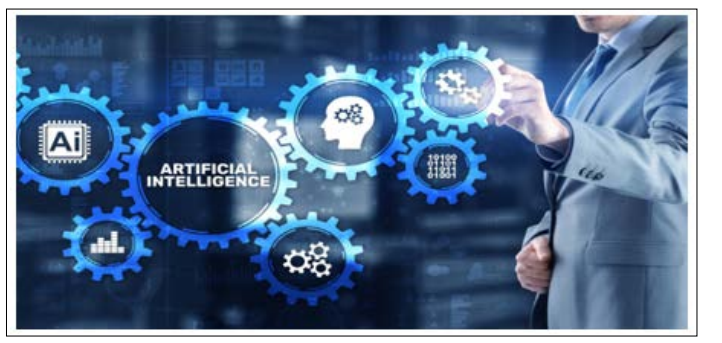
Figure 5: Automating HR Processes
Another significant benefit of the application of AI in workforce management is that it is capable of learning through experience [12]. AI-based systems change dynamically, unlike the typical systems that are bounded by rules and parameters; this is because the solutions can learn from large datasets that they process and can adapt to better predict, recommend, or decide. This capacity to continually learn means that AI continues to be sensitive to conditions of change in either the employees, the market, or the economy conditions generally. Therefore, AI-integrated WFM tools can provide further refined and sophisticated solutions that continue to match the organization’s requirements fully.
This is because the strength of AI in learning iteratively is even more vital in prognostications and the finding of patterns. First, historical data is used, followed by the inputs received in the current period. As a result, AI systems are always better at uncovering new patterns or their evolution [13]. AI can establish temporal differences in worker efficiency, cyclic fluctuations in consumers’ demand, or differences in rates of employee truancy due to certain circumstances like weather conditions, festivals, and other events. In this way, with the help of AI technologies, organizations are able to notice these trends and, therefore, always be ready to change the structure of WM, meet new requirements, or use new possibilities when they appear.
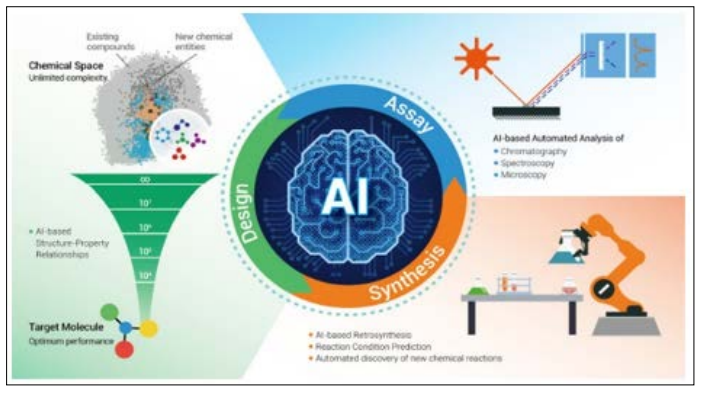
Figure 6: Artificial Intelligence
Once new data is fed to the various AI systems used to make decisions, the systems get even better in their decision-making processes. For instance, in an AI-based scheduling system, when the system obtains additional data about the preferences of employees, the needs of the businesses, and constraints to provide a solution, better algorithms can be introduced to provide better effects for balancing these factors. Such constant fine- tuning enhances schedules that accommodate unit and employees/ delineations and organizational requirements to enhance perceived job satisfaction, performance, and operational effectiveness. Besides, since AI draws its information from past decisions made, it will not make the same errors. Hence, more accurate results are obtained as time progresses.
The flexibility of AI means that workforce management solutions stay useful in a new business climate [6]. By keeping track of these growing external environments within the operational economic conditions in relation to the labor market and other regulatory requisites, the AI systems can adapt the various models and algorithms used in their operations. For instance, consider appearing fresh MRs that have an effect on the employment of workers or overtime remunerations; AI can easily adapt to these MRs within its planning and, therefore, will not lead to complacency. This way organizations can operate freely in different and versatile environment, not fearing that their workforce management solutions are not up to date with new realities.
The same can be said of the aspects of learning as well as the adaptability of AI to the market, offering long-term benefits as well as sustainability to organizations. The systems that employ Artificial intelligence in workforce management enable lasting improvement through frequent process optimization, hence optimality and better performances, engagements, and resource utilization. With the continual advancement and development of these systems, other opportunities for incurring new changes that enable organizations to compete effectively in the existing market are also revealed. Finally, the deployable learning capability makes workforce management solutions not simply the best today but the best that can stand tough challenges of the future to guarantee sustained success.
Demand-based staffing utilizing artificial intelligence is a revolutionary method of organizing shifts, enabling immediate rescheduling according to employees’ working preferences. Traditional methods of scheduling can disadvantageously entail strict planning in advance, and this proves a big problem for hourly employees who need to attend to other responsibilities or in case of changes in schedule. With the use of AI, organizations can make a superior scheduling solution that enables employees to exchange shifts or make changes in shifts without much intervention from an administrator. Such flexibility can be valuable in regard to the employees’ situations, for example, if the employee is a carer, a student, or if they have other intermittent responsibilities, thus helping with work-life balance or, rather, work-life blend.
AI systems employ intelligent algorithms to determine the current and potential evaluation of staffing demands that will satisfy company operations while fulfilling employee demands. These algorithms use records, current data, and business needs to develop and modify schedules that depict the demands of the business and the employees they employ. For example, to forecast sales, review sales records, and identify the timely traffic and employees’ available shifts, AI can create schedules and assign employees effectively and efficiently. In this way, perplexities like staffing insufficient human resources during the increased workload and having a surplus of personnel during the low workload are eradicated, ultimately increasing the overall performance.
The other efficiencies arising from the ability to shift schedules in real-time include the fact that this also eliminates a lot of work for the managers. Conventional methods of changing timetables, especially when the change is at the last moment, include a lot of paperwork, and errors could occur. Some of these processes are managed by AI-driven scheduling systems to help the managers respond, within the shortest time possible, to requests for changes in schedules, such as leaves, shift changes, and swaps among employees or other employees. This automation also benefits from saving time, but more so since schedules may be updated and remain accurate and free from a clash or a mismatch.
Flexibility is another facilitative benefit of real-time evaluation and scheduling, whereby employees are more likely to be satisfied and retained. One can agree with the notion that employees who have input in terms of the work shift will likely be happy at work and not stressed. Flexible shift work is beneficial for all concerned. When employees can change shift patterns to accommodate their private lives or react to certain work changes, they feel valued by their employers. With higher levels of autonomy and flexibility at work, employees are likely to be more productive, and turnover rates are likely to be lower since most employees are not likely to jump ship to other jobs that offer better work-life balance.
When it comes to scheduling, using AI solutions allows receiving information on the employee’s preferences and their activity patterns in the long term [14]. In the context of scheduling, performance data, shift requests, and availability can be fed into a learning algorithm to provide better scheduling data in the future. For instance, the system gives the conclusion that specific employees enjoy specific shifts or have some pattern of availability, and the system applies this knowledge in future scheduling of the shifts. This might not always be possible, but this proactive approach to scheduling makes it possible to meet the needs of the employees and other requirements that may be present in the business setting, hence avoiding conflict between the two.
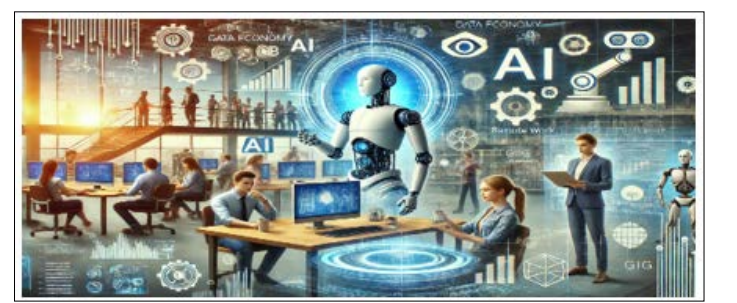
Figure 7: Revolutionizing the Workforce
AI is rapidly changing workforce management solutions through exact predictive staffing and load demand and supply computations. AI can use historical data analysis combined with other factors, such as sales data, to predict when there will be a great deal of traffic and how many people should be hired. This capability is especially helpful for business organizations that operate under consumer variability businesses, such as retail and hotel businesses, for it is often hard to predict the rush hour in those businesses, whether it is within a day or a week. Thus, using AI to forecast high traffic hours or periods and then properly staffing up or down, over and under-staffing, is avoided.
This involves gathering and evaluating huge amounts of information such as sales records of the previous years, the flow of customers, and even non-business related factors such as climate and any activity that may affect business. They use this data to develop machine learning algorithms that will help predict future customer demand. For instance, based on the analysis of such data as previous sales records, AI can predict that certain days of the week or several hours during the day are heavily loaded with customers and, thus, increase the number of employees in advance. This foresight also assists in managing the right number of employees in the organization as well as in maintaining the right level of service delivery and satisfying the customers.
This can be considered one of the primary benefits of AI-driven predictive staffing approaches – to handle the last-minute problem. Best traditional practices are occasionally inflexible in dealing with changes in workload or other startling events such as the loss of employees, which causes operations of an organization to be halted and pressure mounted on the managers. AI systems can easily address such change because they can quickly react to real-time data and make changes to staffing plans as necessary. For example, if customer traffic is high, it is advised which employees should be deployed in certain areas or which tasks should be relocated to another area for a limited time. This, in turn, makes it easier to have a well-stabilized workforce. This is especially important if the organization is set in a dynamic environment.
Another advantage of predictive staffing is that it is a way to enhance the staff members’ quality of life because it prevents them from getting overwhelmed during periods of high demand. This means that when staffing levels reflect the current demand and need, there is little probability of overworking the employees or stressing them beyond what is necessary. This balance can be described as one that is desirable in order to keep employee satisfaction high and burnout low. It also means that by avoiding scheduling employee shifts inappropriately and making workloads unnecessarily overwhelming, AI is beneficial in making workplaces more sensitive to the workforce, making the employee perform their duties efficiently.
The ‘realization’ harvested from AI-mediated, predictive-staffing transcends basic, practical functionality. Using this system, workforce information on staffing patterns and employee and customer behavior is built over time to improve the hypothesis. In this respect, the use of these insights can help organizations make better decisions when it comes to strategic staffing, training, and recruitment. This means that the systems of WFM are proactive regarding the status of the business environment and undergo constant development that can create more efficiencies for operations and improve the odds of continued success for organizations.
Modern timesheets have been significantly advanced with the help of AI-integrated systems as they help track and record the working hours of employees more accurately [15]. Many manual timekeeping techniques need to be more accurate, which usually leads to payroll problems or differences. This is because, by the use of AI, these risks are effectively avoided. After all, the system used to capture the hours that employees take is accurate and highly dependable. It also helps to reduce the managers’ positioning load but also optimizes this process in general, boosting the organizations’ performance.
Easy integration with payroll systems is also one of the merits of AI in the management of timesheets. It eliminates the possibility of manually inputting timesheet data into the payroll software as it automatically gets transferred from the former to the latter in order to facilitate wage and payroll computation. With this integration, the probability of performing errors in payroll calculations like wrong overtime payments or missed working hours is eliminated. Thus, employees get paid fairly and on time, and this issue is very important for developing such values as trust and satisfaction among hourly employees. It is for this reason that adherence to compensational procedures ought to be punctual and void of mistakes so as to avoid workplace differences.
Payroll robotization additionally helps boost the precision of timesheet ledgers, which, in turn, leads to higher operation clarity and conformity. By implementing automated systems, the management is able to document the hours of the employee accurately, and this will be important in conducting checks and balances alongside compliance with the set standard and legal provisions. Managers can obtain business historical time sheets and take reports, which has enhanced the supervisory control process of the business. This transparency not only helps organizations follow compliance laws but also helps them make proper decisions regarding their manpower and operation coordinates.
Payroll processing is also highly optimized by incorporating it with artificial intelligence because the systems assimilate with the payroll software. This integration makes it possible for information from the timesheets, including the number of hours worked, overtime, and any absence, to be well-fed and reflected on the payroll. AI makes computation and data transfer extremely accurate, reducing the chance of employee compensation being made in error or delayed due to data entry mistakes. It means that the payroll function is made automatic, and this takes a lot of load off the organization, thus leaving the organization to engage in other important activities.
Another advantage arising from the use of AI with regard to payroll systems is that it supports timely payments, which is essential in ensuring the employees’ continued confidence and happiness with their employers. Payroll automation helps provide wages to the employees on time, and this is good as delayed issuance of wages will not be appreciated by workers. Also, the AI-driven payroll system increases the credibility of the data and calculations provided and thus decreases the chances of payroll or salary differences and disputes – resulting in a more satisfying financial experience for the employees.
Apart from accuracy and time-saving, the use of AI payroll systems in processing payroll benefits operational organization goals in other ways. Thus, by decreasing reliance on manual monitoring and supervision, organizations are able to decrease overhead expenses and efficiently use their resources. Apart from the enhancement of the company’s simplified financial management processes, it is necessary to underline that the application of AI technologies in the field of payroll contributes to the improvement of the organization’s overall workforce management strategy.
Modern AI systems are also changing the nature of payroll by becoming increasingly compatible with payroll software, thus evolving the system of employee compensation. These systems facilitate the movement of data from the timesheets, specifically hours worked, overtime, and other absences. This cuts down the need for frequent computation by the management and greatly reduces the chances of errors arising from manual computations.
Central to this is that although manual input of data is avoided by the use of AI in payroll systems, accuracy of wage determination is achieved, and administrative burdens are less. Manual processing of payroll involves the use of many employees who are likely to make mistakes, hence delaying payment to employees. These risks are, however, managed by AI systems through the provision of real-time and correct information in the processing of payroll.
Payroll must be processed and delivered on time and with maximum accuracy if the employees are to retain their confidence in the employer. When workers are paid the right amount in accordance with expectations and in a timely manner, it pays a lot towards building trust in due process in an organization. Modern payroll systems powered by AI help minimize delays in salary payment and pay errors, and this results in dissatisfied workers who lose confidence in their employer.
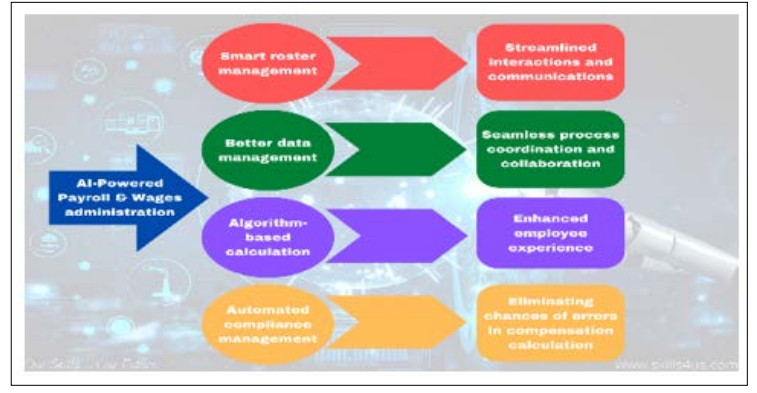
Figure 8: Artificial Intelligence (AI) Makes Payroll Management More Robust and Transparent
Apart from increasing accuracy and time efficiency, AI-based payroll solutions help optimize general administration. Outsourcing payroll functions decreases the amount of effort that needs to be supervised and controlled through human labor, eliminating additional expenses. These efficiencies allow organizations to direct a lot of their resources to other strategic activities in the overall management of their workforce.
Furthermore, absence management has improved as a result of the incorporation of AI into payroll processing. When analyzing patterns and trends of employees’ absences, AI systems can help identify problem areas and propose courses of action. For example, AI can determine the specific days for high turnover rates and advise organizations to find ways to staff or arrange systems to reduce disruption.
Besides countering productivity losses resulting from employees’ absences, this strategy contributes to maintaining a promising corporate culture. Minimizing possible problems related to absenteeism before they escalate means that organizations can maintain proper staffing levels and an employee workload, all of which can help create a healthy environment in workplaces.
In general, the use of AI in payroll eliminates problems related to inaccuracy, processing delays, and inefficiency. By reducing administrative overhead and supporting an active absenteeism pattern, these systems are considered to be an efficient and economical system of workforce direction. Such integration also results in employee satisfaction, trust, and confidence in the organization’s functioning.
One of the most significant benefits of AI-driven automation in workforce management is the potential to increase manager productivity [16]. Today, managers often spend a considerable portion of their time on manual tasks such as scheduling, timesheet approval, and managing absences. These tasks can consume up to 40% of a manager's weekly productivity, detracting from their ability to focus on more strategic initiatives.
By automating these routine tasks, AI can free up managers' time, allowing them to focus on higher-value activities such as employee development, performance management, and customer engagement. This shift not only improves managerial efficiency but also enhances the overall employee experience by ensuring that managers are more available to support their teams.
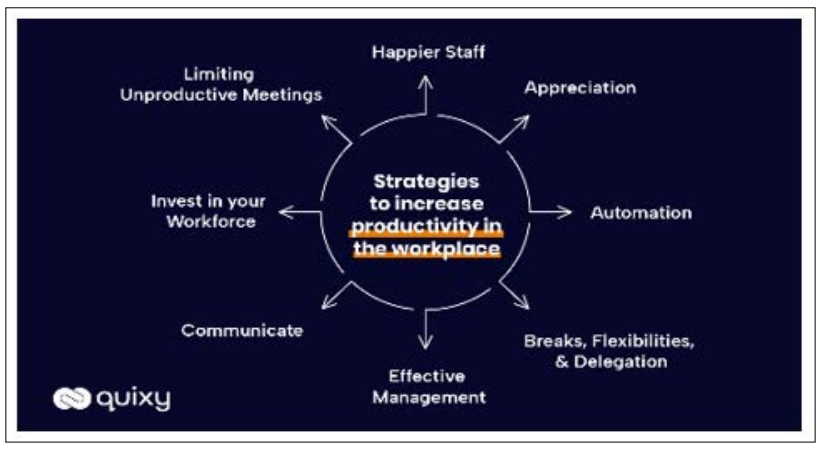
Figure 9: The importance of productivity in the workplace & 8 tips to enhance it
AI can assist managers in making more informed decisions by providing them with comprehensive, real-time data analysis. For example, AI systems can identify trends in employee performance, customer behavior, and operational efficiency, enabling managers to make proactive adjustments to improve outcomes. This data- driven approach can help managers focus on strategic areas that directly impact business performance, such as optimizing workforce allocation, enhancing employee training programs, and improving customer service.
AI-driven automation can reduce the administrative burden on managers, allowing them to spend more time on activities that require human judgment and creativity. For instance, managers can dedicate more time to coaching and mentoring employees, developing new business strategies, and fostering a positive workplace culture. This shift in focus can lead to more engaged and motivated teams, ultimately driving better business results.
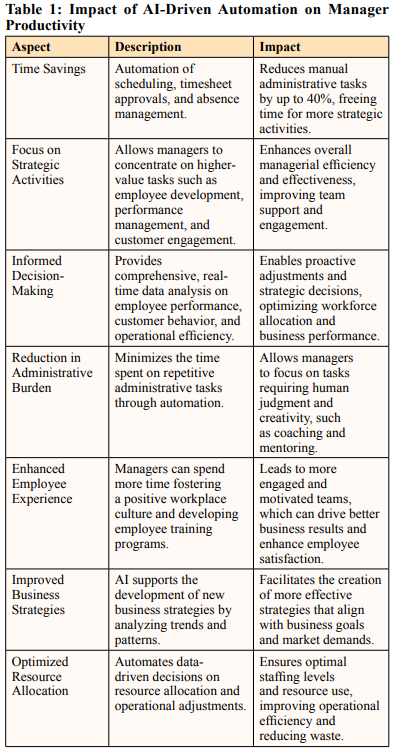
Machine learning-based predictive analytics have proven to be highly effective when it comes to outdoor data collection to improve the reliability of workforce planning. Historical sales data is useful for knowing, for example, that demand in August is high, and therefore, inventories are set in proportion to those trends. Another level of granularity that adds to these considerations is the customer behavior data, including their purchase frequency and trends that would indicate the demand and its possible fluctuation in the present time. Also, weather prediction and market changes should be included to establish other non-workforce elements that affect the estimation of its demands.
In this way, AI models can produce a more complete and elaborate image of the need for future staffing. This also creates opportunities to construct better forecasts of demand, as many factors may influence it. For instance, integrating the results of sales data with weather reports allows one to foresee the spike in staff requirements during unfavorable meteorological conditions that influence clients’ buying.
The capability of integrating and synthesizing these different kinds of data contributes to the generation of this more comprehensive view of the necessary workforce [17]. This technical approach helps to make more precise forecasts and more likely coordinate the number of employees with the real requirements. Companies are provided with multiple data sources to be used for accurate assessment of the workforce plan to ensure flexible workforce management.
In several cases, the use of AI in the management of multiple data sources creates efficient predictive analytics for decision-making. It offers a better view of the coming demand, which organizations can use to prepare better and allocate resources. It also contributes to the overall business objectives of managing the workforce flexibly and achieving better organizational performance.
AI systems present the opportunity for flexible and reflexive patterns of staff augmentation depending on real-time and predictive data. This functionality is important for enterprises that may experience changes in demand throughout a particular period for one reason or another, such as a change of season, special offers, or any other circumstance. Since AI processes current data and can calculate future needs, it can recommend changes in staffing levels in real-time.
For example, in a case where there is sudden customer traffic, AI may alert managers to hire more manpower and thereby keep the quality of customer service up while avoiding breakdowns of basic business operations. On the other hand, if data shows that there is decreased activity, then it can be recommended to let off employees to avoid flair, which leads to too many employees and, hence, high payroll expenses. The real-time response assists organizations in planning their workforce in such a manner that it doesn’t experience idle workforce and, at the same time, does not overwork their employees.
Dynamic staffing adjustments help enhance the operating cycles. Thus, by avoiding overstaffing and understaffing, labor costs can be optimized with the provision of outstanding service. This balance assists in running the enterprise effectively in terms of resources when the simplified structure allows the business to adapt quickly to changes in conditions without significant reductions in performance.
All in all, flexibility in staffing provides the organization with appropriateness and effectiveness. By managing the supply and demand of manpower, organizations can ensure that they keep up with their competitors, hence improving the satisfaction levels of their customers as well as organizational performance. The constructive approach to staffing management is valuable for constant enterprise performance improvement and effective operations.
Machine Learning is highly complementary to the task of workforce planning since the latest AI models are highly effective for the simulation of various conditions in the future and their influence on the demand for the workforce. These models involve the computation of an elaborate set of mathematical equations to develop and analyze various possibilities with business organizations and to help them counteract a vast number of probable events [18]. With the help of such factors as the change in market situations, a change in customers’ preferences, or the change in supplied strategies, AI can enable the foreseeing of future problems and opportunities.
The ability to model different scenarios gives businesses considerable advantage while planning for the future. For instance, AI can produce a model of the impact of a new product, a shock to the economy, or an expansion of the firm into new regions. Knowing how these event-probability pictures may or may not affect the workforce can help an organization strategize on staffing, training, and resource expenditure plans.
Scenario planning also assists in the formulation of sound backup strategies in the form of contingency plans. Likely, AI, in regard to multiple possible future scenarios, enables companies to realize and develop plans to protect themselves in critical situations. In this way, organizations can prevent important disruptions from new adverse circumstances and maintain high adaptability in conditions of significant changes without critical losses.
The use of AI for scenario planning can enhance decision-making because it generates information on the consequences of existing strategies. This makes it possible for businesses to determine which strategies work and which do not require much investment, hence lowering the risks of more expensive mistakes and improving strategic performance generally.
AI techniques that went through the process of evolution make sophisticated tools available to businesses to paint better scenarios for the future. In this approach, organizations factitiously assess multiple future conditions and then ascertain how a particular organizational requirement strategy would fare in each one, thereby allowing planning for multiple outcomes and understanding of several available contingency plans. This capability implies flexibility and adaptability to organizations, and it contributes to sustainable and sustainable development and stability.
A key application of PMS in employee scheduling is the use of predictive analytics to synchronize working shifts with likely busy periods. Today's AI models use past information about sales rates, customer visitation, and visitation trends by period to estimate future demand correctly. By incorporating these concepts, AI can suggest the right staff scheduling that will ensure the number of employees to be assigned for each shift is determined based on the expected number of activities to be handled. This will ensure that the organization is adequately staffed.
Another benefit of using AI in the scheduling process is the ability to minimize cases of scheduling conflict. Through the integration of AI, the analytic data of the peak periods of the week or month, as well as the availability of workers, can be used to create human resource schedules that have little overlapping or gaps. Such scheduling allows organizations to reduce instances of employee schedules with contradictory shifts and occasions when certain shifts are unstaffed, and this will positively impact organizational operations.
Increasing employment satisfaction standards is yet another major advantage of the optimization of the employee scheduling process. If incorporated in the AI models employee preferences, availability, and workload balance, then the generated schedules are likely to meet personnel's requirements and few last-minute changes. Such an approach of flexible working hours improves satisfaction with work, relieves stress, and promotes a better ratio of work to one's private life.
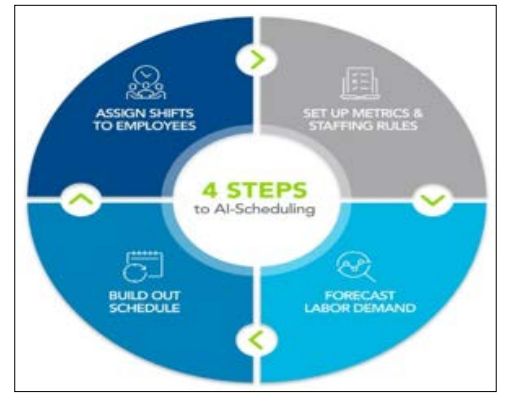
Figure 10: AI-Powered Employee Scheduling
Another way to manage high service quality during a period of high demand is through the right schedule. AI ensures that the right staff is hired to cater to the busy periods, hence delivering on the customers' set expectations. Maintaining organizational staffing with the present demand guarantees high service quality over time, even at the height of business.
In a nutshell, using predictive analytics to improve employee scheduling will lead to improved efficiency and productivity, decreased staff conflicts regarding scheduling, and increased staff morale in organizations [19]. When scheduling is done using artificial intelligence, it becomes easy to match shifts in relation to patterns of business demands and provide good customer service while at the same time promoting good relations between employees.
AI-supported tools can provide the capability to track demand shifts in real time; this gives businesses the status of what is current and can be used. These tools are designed to stay in touch with different data streams, including sales numbers, customer contacts, and factors outside the control of a business, for example, the weather or a local holiday, to give a true reflection of prevailing demand trends. Such information is up-to-date and can be used to make necessary changes, keeping in mind that staffing relates to the immediate requirements of an organization's workforce.
One of the most important advantages of real-time demand tracking is the flexibility that stems from that concept, as it concerns staffing requirements. In surges of demand, the systems can easily notify the managers that there is high activity and recommend changes to staffing. This makes it easier for the business to be ready for changes in the number of consumers and ensures that the business does not have to shut down services to rearrange for consumers.
Real-time tracking is one of the key points that allow the development of effective business strategies and adapting to changes in the environment in time [20]. The AI tools provide updates based on the levels of demand and thus help the organizations to make dynamic changes while working on the workforce plans. This flexibility is important in ensuring that the service quality and the customer needs are met, especially in conditions where there could be a last-minute change in demand.
This is also instrumental in streamlining workforce allocation since real-time demand for products and services is crucial. When demand data is as current as possible, businesses can then manage staff assignments well to avoid the trap of either overstaffing or understaffing. Consequently, operational costs are controlled to the optimum level while the quality of services offered is maintained at a premium.
The use of intelligent techniques for monitoring real-time demand increases an organization's capability of effectively reacting to the dynamic demand environment. With timely relevant data feeding the workforce models and the ability to tweak these models to adapt to changing organizational requirements, AI is efficient in service delivery, effective in enhancing service delivery, and viable in the dynamic environment that is the current organizational market.
AI data-driven workforce prediction helps control labor expenditures by avoiding excess hiring and, at the same time, situations where there are insufficient employees to cater to business demands. With such forecasts, AI models can be used to optimize staffing levels in accordance with real business requirements to prevent overhead costs for a workforce that is too large or too small. This precision in staffing assists organizations in keeping their labor expenses as close as possible to the necessity of operating the business.
Optimal staffing through the use of artificial intelligence decreases wasteful labor costs by anticipating the degree of usage needed for a certain facility and the number of workers required. It avoids circumstances that offer a firm high cost because of staff redundancy during off-seasons or lack of sufficiency during high demand. This way, the control of the operational costs and, in particular, the labor costs would lead to the improvement of the financial performance of the organizations.
AI's efficacy in delivering precise predictions does add to the effectiveness of labor as well [21]. By having a better picture of how the demand pattern is likely to look in the future, employers are in a position to organize employees better in order to harness the available human resources in areas where it is most required. This optimization eliminates shift wastage and increases the efficiency of employees because employees are assigned according to the workload of the company.

Figure 11: Innovation in Company Labor Productivity Management
They have integrated optimized cost planning through the use of artificial intelligence, resulting in improved profitability. The positive repercussions for businesses include using less of their workers' time and thereby achieving greater efficiency of the available workforce in a company. Elimination of unproductive expenditures and enhancement of operational effectiveness contribute to improved profitability that assists the business's sustenance in the long run.
In general, AI's contribution to the machinery of precise workforce forecasting has dire consequences on cost control and labor productivity. In ways, AI assists in staffing decisions by giving accurate forecasts, letting businesses minimize or avoid overstaffing, increasing organization capacity utilization, and ultimately increasing the overall profitability and financial health of the company.
Workforce planning is another area where AI has a very important role to play in improving levels of employee satisfaction, as it provides them with more consistent and regular work schedules that are predictable to a large degree. The use of AI is highly advantageous in that it helps to produce patterns for the management of the employees who are paid by the hour. There is then assurance of higher work and business organization from employees, hence enhancing work-life balance. With the element of uncertainty removed as a factor in work schedules, AI systems bring less stress, therefore improving general well-being in the workplace.
AI in scheduling improves the ability of these systems to predict the likely occurrence of changes to work schedules, further reducing instances of last-minute changes. These changes can also have an impact on the employees' personal lives and lead to stress and dissatisfaction. The application of AI also helps improve the scheduling and timing of events and thereby allows members of an organization to prepare for the kind of work demand and the scheduling that will be required in advance; hence, the time becomes more predictable for members of an organization. It is for this reason that stability helps employees feel cherished and safe within their lines of work.
Among all these changes, the decline of schedule changes is of particular relevance for boosting employee satisfaction [22]. These patterns are then taken into consideration in order to generate scheduling that has the least impact on customers or other things. Those who observe little change in their schedule feel appreciated and valued by the employer, hence improving the organizational culture.
The application of scheduling and AI workforce planning has the added benefit of maintaining and even enhancing employee satisfaction. When employees are satisfied with their scheduling and working conditions, they would like to stay with the organization. High levels of satisfaction always lead to high levels of commitment, which has the effect of achieving lower turnover rates.
The work schedules that come with AI can be easily maintained and kept constant to add to the productivity of the workplace. It also found that employees are more willing to work and remain with an organization if they give importance to their welfare and in creating a steady working environment. Overall, if the human resources of an organization use AI to come up with the standard and fairways of creating schedules, the chances of losing employees are minimal.
AI stabilizes the work environment and employees, resulting in more motivated workers. Engaged and committed employees are those who have been given the support they need to work as expected. It is important to note that such engagement has a positive impact not only on the employees' performance and well-being but also on the success of the organization.
Five, employee satisfaction and retention for the longer term help sustain a pool of skilled and experienced workers. Workforce planning, as influenced by AI, assists in making organizations have dedicated staff by catering to factors that cause workforce satisfaction. This, in turn, constitutes better-quality, more committed employees, which substantially contribute to the organization's stability and development.
It is a general practice to incorporate AI in workforce planning so that employee satisfaction and retention rates are high due to better stability in scheduled working hours, less disruption, and an overall positive organizational culture. Thus, by focusing on meeting the needs of employees through the usage of AI, organizations can increase workplace satisfaction, lower turnover, and develop a stronger resource base of qualified employees.
Long-term strategic workforce planning involves insights that will help organizations synch workforce strategies with organizational goals with the help of AI models. Modern AI systems allow for the provision of specific concepts and forecasts of the required human capital in the future and, therefore, the adjustment of strategies. This makes certain that the planning of the workforce further enhances the objective of the firm and meets the changing market demands.
Through AI, organizations can be aware of trends and potentially problematic spots in their field or industry of operation [23]. These insights allow business businesses to organize their key personnel effectively and implement long-term strategies regarding recruitment, training, and development. SWP, using AI, assists firms in anticipating future market requirements so that staff with suitable skills for such specific jobs are recruited.
In the same regard, long-term planning using artificial intelligence ensures that opportunities and potential threats to the company are recognized much earlier, making growth more sustainable. Businesses can use these insights to achieve their short-term goals and, at the same time, set up long-term plans. Mechanisms of strategic management help organizations remain competitive and adaptable to the new circumstances in the industry.
AI implementation in strategic management improves a company's effectiveness in accomplishing set objectives and sustaining competitive advantage in the long run. With the help of tools providing predictive analytics of workforce data, businesses can anticipate market challenges and adjust their strategies depending on the outcomes, achieving steady performance growth and stability of success.
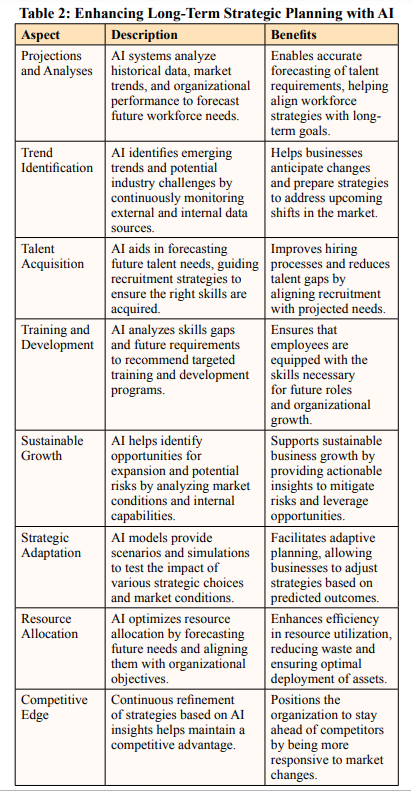
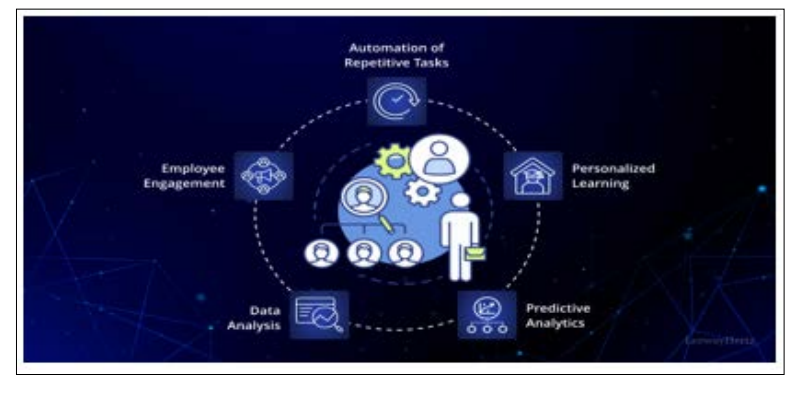
Figure 12: AI in the workplace: Use cases, applications, development and implementations
After the implementation of the scheduling system using AI, efficiency greatly improved. For instance, it avoided the overstaffing and understaffing situations typical of the waste of all labor resources or service delivery breakdowns. Since the schedules were aligned with real demand, the organization was also able to reduce idle time for the employees and, at the same time, meet the customer's needs, hence a good use of resources.
Apart from scheduling, the organization implemented the use of artificial intelligence in time-sheet management and payroll. These systems helped track and record the employees' hours in a precise and efficient way, reducing the errors that are frequent when manual procedures are applied. Calculating pay for employees was the other area that was done automatically under the team's plan, so its accuracy and timeliness created the necessary satisfaction for the employees. It also integrated with payroll systems, and this eliminated a lot of paperwork from the HR personnel and managers' activities.
Another facet of effectiveness is utilizing information analysis to increase the organization's forecast and workforce proficiency. The AI system regularly analyzes data from different sources and gives near real-time views on workforce requirements based on sales and other activities. This capability puts the organization in a central position to get the staffing levels right more accurately, keep down labor costs, and deliver quality service to the clients.
AI-driven automation thus became apparent in the gains in industrial productivity and organizational efficiency. Managers have to free up much of their time, which was previously devoted to performing manual procedures, and can now attend to more essential business operations such as training and appraising employees. It also caused a behavioral change in the management team, who were more committed and productive, thus having a positive impact on the overall organizational climate.
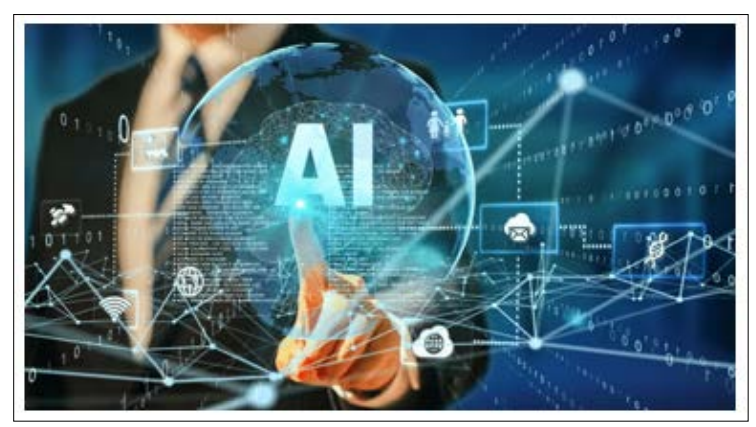
Figure 13: How Can AI change the Face of Workforce Management
Employees also got to enjoy a better and more consistent working schedule, coupled with correct remuneration. The following benefits can be attributed to flexible scheduling, which helped to keep administrative errors in check: a) The work experience was found to be much better, and this resulted in increased employee retention rate and satisfaction. In terms of the organization's outcome, the organization noted that the rates of turnovers significantly reduced, and the morale of the employees increased due to these changes that AI informed.
All in all, the current case shows how the use of AI can bring about numerous benefits to processes of workforce management [8]. Applying intelligent and efficient systems has enhanced employee satisfaction, increased managers' effectiveness, and improved organizational performance. Thus, by establishing intelligent automation, the organization managed to solve critical issues and achieve long-term business and competitive success in the sphere of retail.
The future of workforce management is going to be intelligent automation propelled by AI, which is highly likely to transform how hourly work is experienced. AI also comes in handy to manage and allocate employee workload, working hours, and absence, which are repetitive tasks that can take up most of the employee's time. However, besides efficiency and effectiveness, it opens new opportunities for employees to avoid routine work and, thus, become more interested in the job. AI, in this case, also reduces bottlenecks, ensuring that employees have better control over their working culture and environment and, thus, more satisfaction in their places of work.
The consequences of AI in decisions about staffing strategies are massive. This is achieved through the acquisition of real- time information by AI systems and the formulation of better decisions. Managers benefit because they gain accurate statistical data to determine when staffing levels are too high or too low and when they are busiest so they can fashion these resource allocations as necessary. Thus, the transition to data-driven personnel management is beneficial for the company, as it helps it adapt faster to changing conditions and has better results for workforce management.
In the case of managers, the change to the incorporation of artificial intelligence and automation offers a massive leap in efficiency. When managers are released from low-level administrative activities, they can invest more time in more important activities like staff training, performance appraisal and development, and strategic development. Besides, it is a positive shift in managerial performance and overall corporate culture within the organization, as well as support for the employees. Thus, it should be possible to observe a higher level of employee engagement and, consequently, enhanced organizational performance.
As AI technology evolves, there will be more opportunities for its utilization and improvement in workforce management. Since AI's capabilities to learn from new data mean that over time, its impact will be even more profound, it brings significant tools for businesses to enhance their workforce management. In light of the above facts, AI intelligent automation helps organizations maintain a competitive advantage and be ready for continuous changes in the business environment so as to gain sustainable development.
In conclusion, the proposed innovations of integrating AI to handle workforce management processes can result in a high increase in customer satisfaction, organization, overall productivity, and labor efficiency. The use of AI solutions provides organizations with ways to efficiently develop a less hierarchical and more employee- centric model of operations that will ensure their continuous success in the future.
